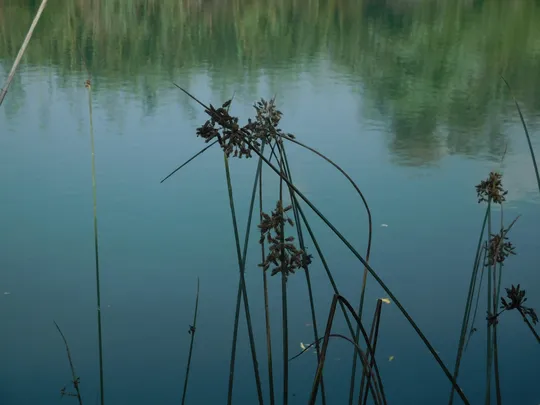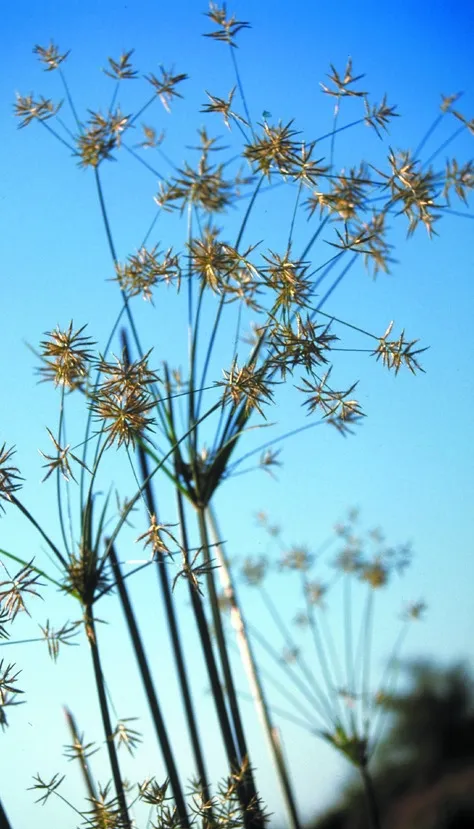Sharpscale Bulrush
Scirpus supinus
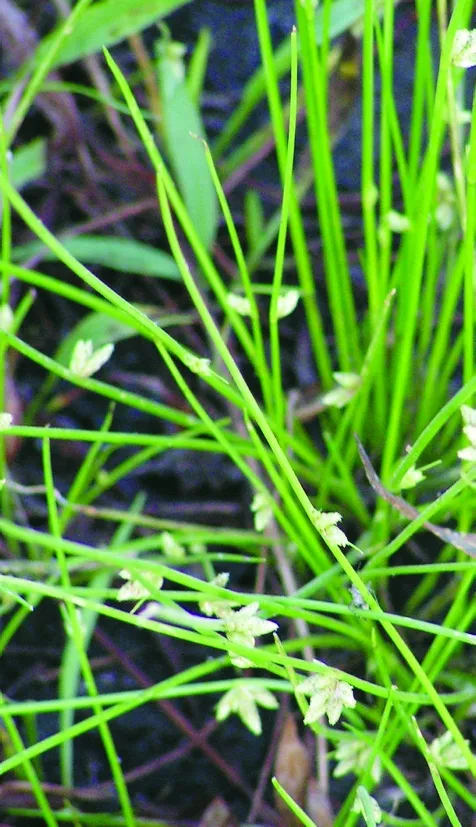
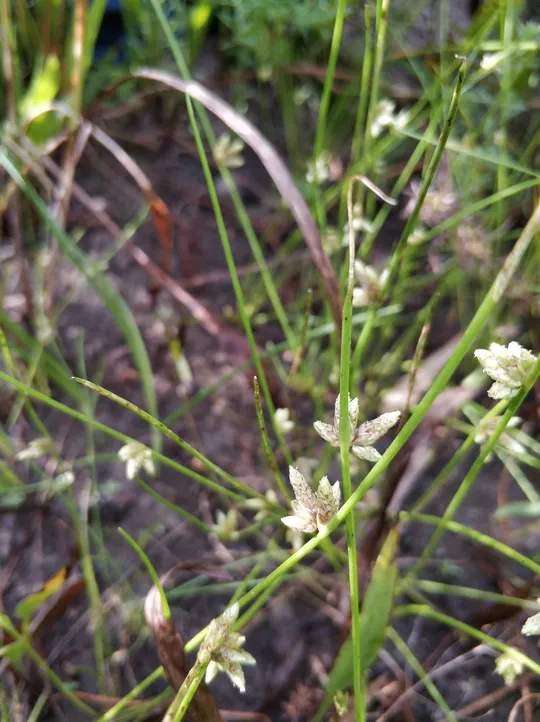
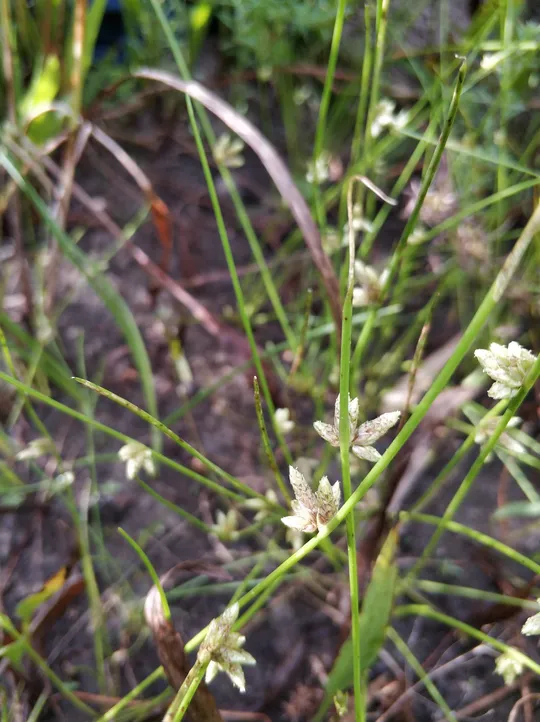
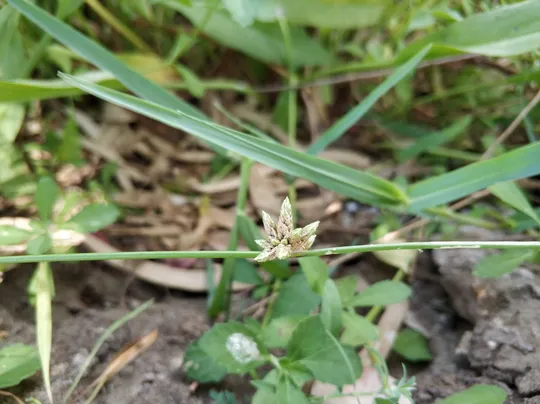
Scirpus supinus is a small annual species that reaches a
height of 10-20 cm. Its leaves are elongated and its lower leaves are
sheath like. Spikelets are 3-5 mm long and each one contains
6-9 elongated green-brown flowers. Blooms in the summer.
Since1905 has been found a number of times in the Sharon at the Dora Pond in southern Netanya. It was found again in 1997, and recently (2006) many plants were found in the Dora Pond. In the areas around the pond, there is intensive construction and development. Although construction does not reach the edge of the pond, it has seriously affected drainage and the lateral flow of water and nutrients to the habitat. The species was recently found in the Sharon in the Menashe streams' settling pools near Pardes Hanna, but this may have been a random occurrence. In the Flora Palaestina (according to the Herbarium), there is a record of the species from Nitsanim in the Philistean Plain (1929).
On the banks of permanent and seasonal ponds and lakes on sandy soils in the Coastal Plain. The species grows in the Dora Pond in the “rare plants belt”, which also includes Elatine macropoda, Corrigiola litoralis and Oldenlandia capensis. This is a soil belt that is flooded in the winter, covered by water 2 cm deep or less. Later in the season, the soil surface dries up, but deeper down the soil remains moist.
The genus Scirpus supinus includes about 200 species with a cosmopolitan distribution, mainly in moist and aquatic habitats. In Israel grow 6 species of Scirpus grow, of which four are tall perennial plants (40-120 cm) and two are minute annual species. Of the latter two, Scirpus cernuus is a relatively common annual that grows on the banks of water bodies on the Coastal Plain and the Acre Valley. In Scirpus cernuus the length of the lower involucre bract (the pointed leaf rising above the inflorescence) does not exceed 1.4 cm, while that of Scirpus supinus is longer than 2.5 cm. In both species, the inflorescence is located “laterally” relative to the central stem. Both the above Scirpus species are similar to Juncus plants. They belong to the group of short-lived Scirpus species, tropical in origin, which have a very extensive global distribution and the ecological ability to colonize and become established in new distant wetland habitats. They are probably dispersed by birds.
• The habitat of Scirpus supinus is very unique – ponds in a sandy environment. This habitat is declining on the Coastal Plain both as a result of the reduced groundwater level and due to development.
• The only existing population grows at the Dora Pond south of Netanya. This population has not been observed with certainty since 1997, but probably still exists at the edge of the ponds. Birds apparently disperse the plant, which could explain its random appearance on the Menashe reservoirs in 1996 and in Nitsanim in 1929.
• It is very rare in Israel, and its appearance may be episodic. It has a broad global distribution and is probably not threatened globally.
• The construction around the Dora Pond threatens the existence of many aquatic plants, among them some of the rarest plants in Israel: Elatine macropoda, Corrigiola litoralis, Oldenlandia capensis.
The water regime and minerals in the Dora Pond should be monitored and the demographics of its Scirpus supinus population should be studied. The Dora Pond should be declared a nature reserve.
The species has a broad distribution in tropical areas of the Old World as well as in northern areas.
A very rare annual in Israel. The species has a broad global distribution: it is a northern-tropical species, probably cosmopolitan. A strong colonizer that comes and goes.
There were doubts about including the species in the red plant species list, as there is a possibility that the plant’s appearance in Israel is episodic. However, the stability of its appearance in the Dora Pond leads us to believe that this is indeed a local plant, characteristic of Coastal Plain water bodies, which we should try to preserve and prevent its extinction. The species is characterized by long-distance dispersal between water bodies, rapid growth and disappearance of populations that do not become established. These features are consistent with its diminutive size, rapid growth and its annual life form, which is rarely seen in other Scirpus species.
Current Occupancy Map
| 1000 squre meter pixel | 5000 squre meter pixel | 10000 squre meter pixel | |
|---|---|---|---|
| number of observations | 0 | 0 | 0 |
| in total pixels | 0 | 0 | 0 |
| Family | Cyperaceae |
| Classification | On the endangered species list |
| Ecosystem | Coastal Area |
| Chorotype | Multi-regional, Tropical, Mediterranean and Euro-Siberian |
| Conservation Site | Dora Pond |
| Rarity |
1
6
6
|
|---|---|
| Vulnerability |
0
4
4
|
| Attractiveness |
0
0
4
|
| Endemism |
0
0
4
|
| Red number |
1
5.8
10
|
| Peripherality | S |
| IUCN category | DD EW EX LC CR EN VU NT |
| Threat Definition according to the red book | Critically endangered |
 Based on:
Based on:

